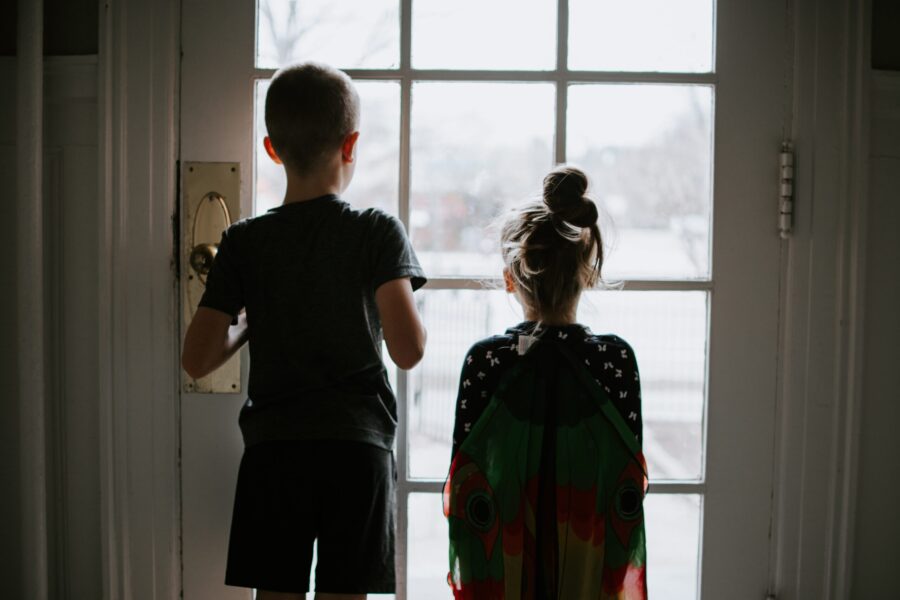Is Too Little Play Hurting Kids Today?
Unprecedented numbers of young people are struggling with anxiety and depression. According to Dr. Peter Gray, research professor of psychology and neuroscience at Boston College, not enough independent play in childhood may be to blame.
Joseph Polidoro of Science Quickly at Scientific American recently hosted a conversation with Gray and an international panel of psychology experts about the correlation between the loss of independence in childhood and mental health decline in adolescence. They also explore other factors, such as smartphones and social media, which influence children’s mental health.
Participants in the podcast include:
- Joseph Polidoro – host of Science Quickly
- Peter Gray – research professor of psychology and neuroscience at Boston College
- Jean Twenge – professor of psychology at San Diego State University and author of the books Generations and Igen
- Corey Keyes – professor of sociology who spent his career at Emory University
- Stephan Collishaw – professor in developmental psychopathology at Cardiff University and co-director of the Wolfson Center for Young Peoples’ Mental Health
Direct excerpts from that conversation follow:
Joseph Polidoro: It’s been declared a national emergency. Mental health among children and adolescents decreased steadily between 2010 and 2020. By 2019, death by suicide had become the second-leading cause of death for those between age 10 and 24.
But this mental health decline may have been decades in the making. And according to a team of researchers, it’s partly because we’re not giving kids the independence they need.
Independent activity lays the foundation for mental health & resilience
Peter Gray: It’s not just moderate evidence. It’s overwhelming evidence that if you take away children’s opportunities for independent activity, they’re not going to learn how to be independent and that’s going to lead them to be anxious and depressed, fearful about the future, and all the things that we’re seeing now.
Play is how children pursue what’s fun for them. That’s an immediate source of mental health—part of mental health really means “I’m happy” or “I’m most satisfied with my life right now.”
I think that the real crisis is that young people are losing a sense of, “I can solve problems, I can deal with bumps in the road of life.” And the way the children learn to do these things is through play where they are responsible to solve their own problems. They negotiate with their peers. They figure out how to solve quarrels among themselves. If somebody gets hurt, they figure out what to do about being hurt.
Who controls experiences in my life? (External vs internal locus of control)
Polidoro: When kids are allowed to make decisions and solve problems, they exercise what’s called their internal locus of control. They begin to feel they have control over experiences and their lives, rather than experiences controlling them.
Gray and his team cite work by psychologist Jean Twenge. She observed a dramatic increase in anxiety and depression from the 1960s through the 1990s. During the same timeframe, say Gray and his team, Twenge also reported a steep decline in internal locus of control. Gray says this correlation likely suggests that the decline in internal locus of control helps explain the mental health decline.
On smartphones and the decline in mental health
Twenge: I’ve been doing work on generational differences for 30 years, and I got used to seeing changes that were big, but they would roll out slowly. And these changes in mental health were like nothing I’d ever seen. They were very, very sudden and very, very large.
So we see these increases in depression starting in the early 2010s. That happens to be the same time when the majority of Americans first owned a smartphone. It’s when social media use among teens moved from something that was optional, that about half of teens did every day, to something almost all of them—75%, 80%—did every day.
So if you put these three things together—more time online, less time with friends face-to-face, less time sleeping—that’s a very bad recipe for mental health.
We also know from several recent studies that these increases in anxiety and loneliness among teens are worldwide. That helps us rule out a lot of U.S.-based explanations around politics or school shootings or any of these other things because we see very, very similar patterns in other countries around the world.
Social media is not just an individual issue. Social media is social. It has an impact at the level of the group.
Take a kid who doesn’t have social media. Are they going to be able to live like it’s 1988, and go out with their friends? No. Who are they going to go out with because everybody else is on TikTok or Instagram at home. The whole social norm changed. These are group level effects.
On the correlation between social media and depression
Twenge: In one of the best data sets that we’ve got, the correlation between hours of social media use a day and symptoms of depression among teen girls is 0.2. The correlation between childhood lead exposure and adult IQ is 0.11—about half the size. So again, I think that really makes that case that there are not small effects.
[To protect children from social media harm,] raise the age to have a social media account to 16 and actually enforce age. That’s one of the clearest, most straightforward things that we can do. And it could potentially have a big impact.
We enforce age limits for driving. We enforce age limits for voting. We enforce age limits for alcohol. Why not do it for social media?
You can listen to the full conversation here.
Polidoro, Joseph. “Is Too Little Play Hurting Our Kids?” Scientific American, 4 Dec 2023, https://www.scientificamerican.com/podcast/episode/is-too-little-play-hurting-our-kids/.
Photo by Kelly Sikkema on Unsplash



